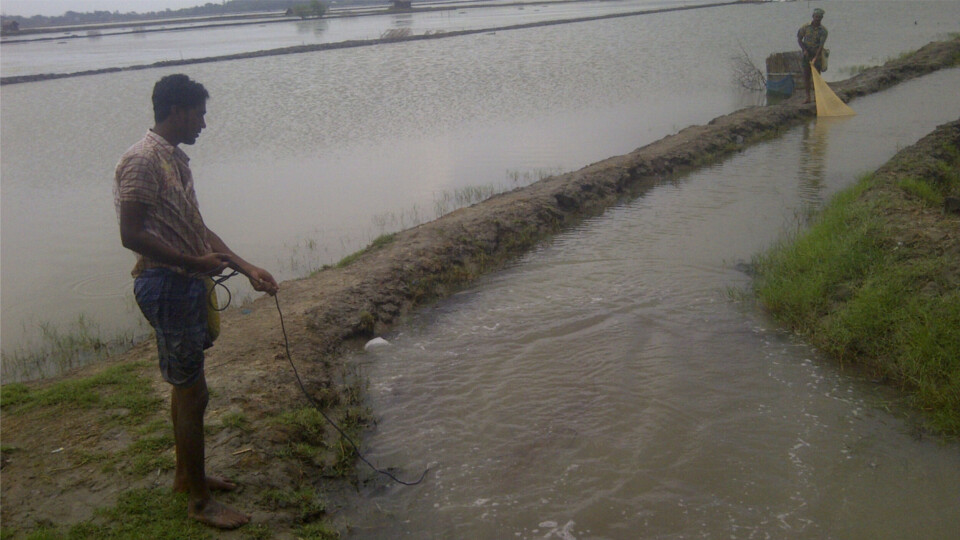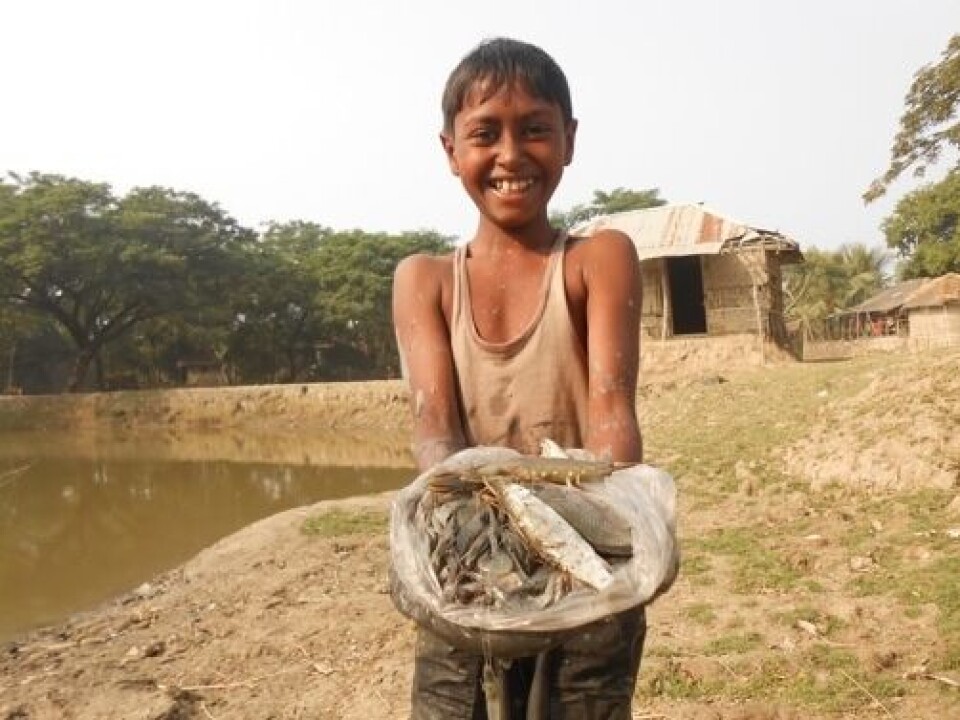
Shrimp farming good for Bangladeshi families, Stirling researcher's study shows
A new, large-scale study into prawn and shrimp production in southwest Bangladesh has found that the industry is crucial to public health and prosperity, whilst being climate-resilient, contrary to its reputation.
The University of Stirling’s Institute of Aquaculture and partners conducted the study over four years, collecting quantitative and qualitative data from 240 households and 160 shrimp-prawn farms in four different communities.
Contrary to criticism in recent years of the impact of export-driven prawn and shrimp farming on communities and the environment in Bangladesh, the study found that a relatively small amount was exported, providing important income for communities, and other fish production had a low impact on the environment, whilst providing crucial nutrition.
The researchers found that only 20-40% of all the fish produced – the shrimp and prawn - was destined for export, with a high diversity of other fish being produced, sold and consumed locally in mainly small-scale enterprises.

Counterbalance
PhD researcher Abdullah-Al Mamun, lead author of a paper presenting the findings, said: “There has been very little research into the detail of what’s happening on the ground in Bangladesh, to counterbalance global discourse about food security and trade liberalisation. There has been criticism of the effect of prawn and shrimp export on communities and the environment.
“This study is important, because it shows that the family-driven, polyculture system currently in operation in southwest Bangladesh actually safeguards household nutrition and income, whilst requiring far fewer inputs than the intensive systems in operation in other places, making it better for the environment.”
The researchers used an interdisciplinary approach to gather data at household level. Four areas of gher dikes (where rice, fish and vegetables are grown together) were studied: high saline (coastal), medium saline, low saline and freshwater (inland). Forty households farming fish from each area were chosen at random, and underwater biodiversity was measured.
Mamun said: “As well as prawn and shrimp, we found 52 other fish species growing in the water across the four areas, which is surprisingly diverse, as well as a range of vegetables.
“The prawn and shrimp for export brought in the highest price for households. The other 52 fish species and the vegetables were consumed and sold locally.
“We found 60% of households were farming fish and the other 40% were indirectly linked – either employed by farms or along the supply chain - so aquaculture is incredibly important to people in southwest Bangladesh.”

Few inputs required
The study also found that very few inputs were needed to grow the fish, making the impact on the environment low.
“Ninety per cent of these farms were extensive, i.e., with a low stocking density and relying on food produced naturally in the pond rather than on artificial feed, irrigation, energy or electricity,” said Dr Mamun. “In the freshwater area, hatcheries were being used to produce finfish, but in the saline areas, the finfish grew naturally.”
The researchers studied 60 households from each of the four areas, asking local leaders to place families on a scale from rich to ultra-poor. Better off and poorer households that had at least one adolescent girl present were then sampled.
Coastal fish
Mamun said: “Women, adolescent girls and infants are the most vulnerable in terms of getting their proper share of food. We measured how much food each family member got from the pot, in terms of protein, energy and food group. We calculated how much food each should receive, depending on their energy expenditure, and found that adolescent girls were still receiving 10% less food than they should be.
“We also mapped the nutritional profile of what they ate, analysing biomarkers from a finger prick test. Interestingly, the girls in the high saline areas showed a higher level of a crucial fatty acid – EPA and DHA – showing that the coastal fish that they could access is more nutritious.
“While the prawns and shrimp were exported, they actually had lower nutritional value than the finfish retained for local consumption. But the exported catch gave financial strength to households.”
The study was overseen by Professor Dave Little at the Institute of Aquaculture. He said: “The data-set in this study was of an extremely high quality.
“The results send a clear message that consumers can safely eat Bangladeshi shrimp, knowing they are also supporting local people being able to eat more nutritionally valuable seafood.”
The study involved two nutritionists – Professor Baukje de Roos from the Rowett Institute at the University of Aberdeen and Nanna Roos, associate professor at the Department of Nutrition Exercise and Sports (NEXS) at the University of Copenhagen.
It was funded by the Commonwealth Scholarship Council, UK, and the EU Sustaining Ethical Aquaculture Trade (SEAT) research project, supported by UK Aid’s Innovative Methods and Metrics for Agriculture and Nutrition Actions (IMMANA) programme.
Major impact on development work
Minister of State for South Asia and the Commonwealth, Lord Ahmad said: “The UK Government is pleased to be supporting this Scottish research, bringing new insights into how prawn and shrimp fishing benefits communities and can combat climate change.
“This high-quality study will have a major impact in how we approach future development work by challenging long-held assumptions about smallholder fish farming, as opposed to more intensive commercial farming.
“University of Stirling’s work will enable us to look at ways to protect a vital part of Bangladesh’s economy, which offers climate-resistant livelihoods and highly nutritious food security to more than 38million people.”
The paper ‘Export-Driven, Extensive Coastal Aquaculture Can Benefit Nutritionally Vulnerable People’ is published in the journal, Frontiers in Sustainable Food Systems.






















































